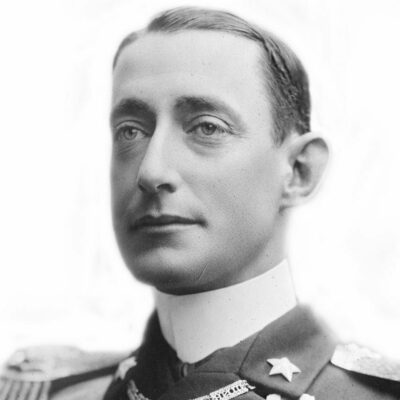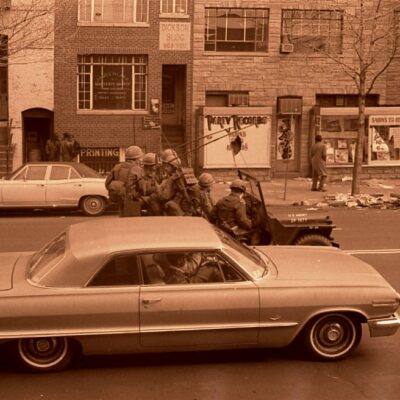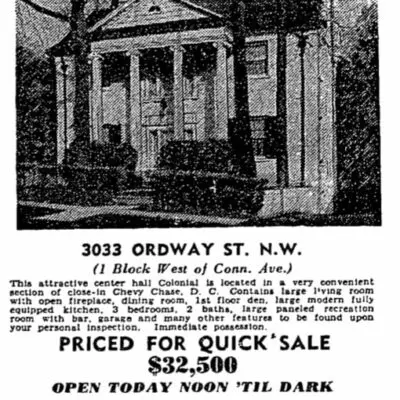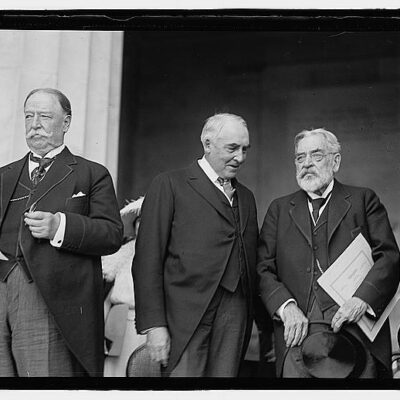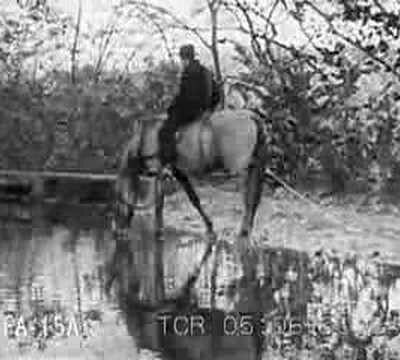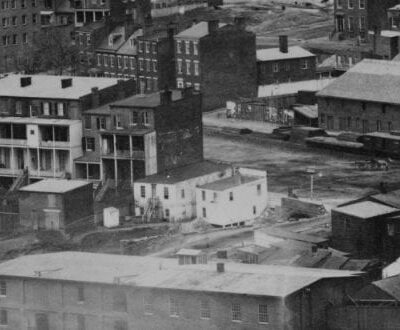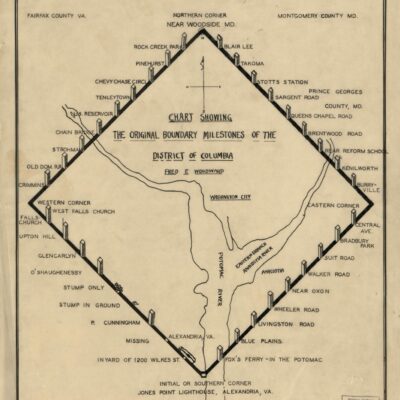I was poking around the archives of both The Washington Post and The Washington Times to come across a gem of a story to share and the one that caught my eye involved two Georgetown boatmen engaged in a brutal fight to the death.
Reading through any article titled “Murder in Georgetown,” you’re primed for a taste of some horrid scandal or macabre titillation that a Ghosts of DC reader has come to expect.
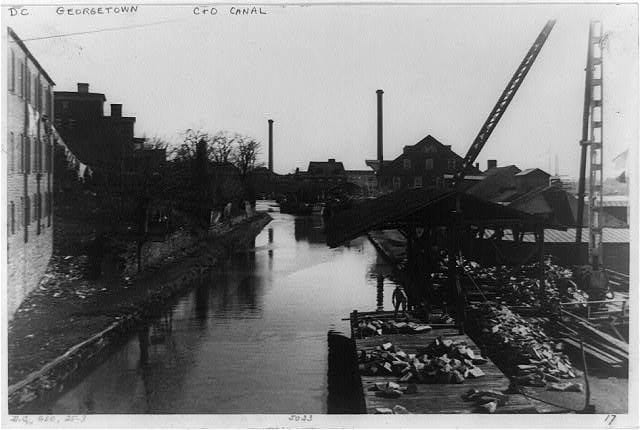
The article is from The Washington Post and was published on March 22nd, 1886.
In a tall and dilapidated brick house facing the river, on Water street, above Thirty-third street, there occurred on Saturday night one of the most brutal and desperate fights between two canal-boat men which has for years startled the quiet community of West Washington, and which resulted yesterday in the death of John Bruebaker from the injuries he received from his adversary, George Seaman.
-ad 197-Both are men of more than usual strength and distinguished by their brutality, but had always been friends until the frequent visits of Bruebaker’s wife to Seaman’s house led to an estrangement and the fight Saturday.
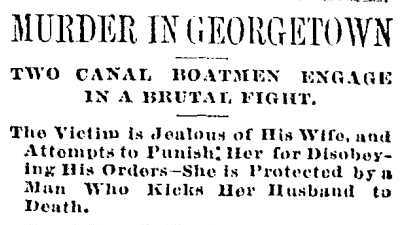
If you’re a biker (bicycles, not Harleys), you have probably passed this location on a number of occasions en route to kick off your weekend adventures on the Capital Crescent Trail. The location is just past the The Papermill Condos in Georgetown and right next to the The Flour Mill. Here’s a little back story, and these always involve some intoxicant. Believe me, this gets a little crazy. George Seaman (aka, G.W. Simmons) was not a good dude.
It seems that while Bruebaker was sleeping off in his cabin a customary fit of intoxication on Saturday evening his wife determined to pay a visit to her friend, Mrs. Epps, who lives on the third floor of Seaman’s house, and while there was obliged to call for assistance in consequence of the sudden illness of her friend.
Seaman responded instantly, and while the two were engaged in assisting the sick woman, the door was suddenly thrown open and Bruebaker staggered in in search of his wife. The moment he saw her his eyes, bloodshot from the effects of his recent debauch, lighted up with malignant fury, while the poor woman shrank frightened into a corner.
“You are here again,” he said through his clinched teeth as he walked straight towards her and seized her by the shoulder. “This is the way you heed what I tell you,” and without paying the slightest attention to her entreaties, he struck her fiercely in the face. Before he could repeat the blow Weaman, who was still in the room, seized his arm and tore them apart. Then the two ruffians glared at each other and prepared for a struggle, but as they did so Mrs. Bruebaker rushed between, imploring Seaman not to strike her husband and saying that she was willing to stand the blows herself.
-ad 199-Seaman, though violently angry, tore himself away and abruptly left the room. When he had departed Bruebaker turned to his wife and again commenced abusing her, exclaiming as he did so, “Seaman is the bully of Georgetown, but he can’t whip me.”
By now, you know this is not going to end well. It’s almost like a low budget B movie … “the bully of Georgetown, but he can’t whip me”? Come on, seriously? Fast forward 100 years to Stallone’s masterpiece Cobra (by the way, Ron Jeremy was an extra), and you’ll get some equally poignant quotes.
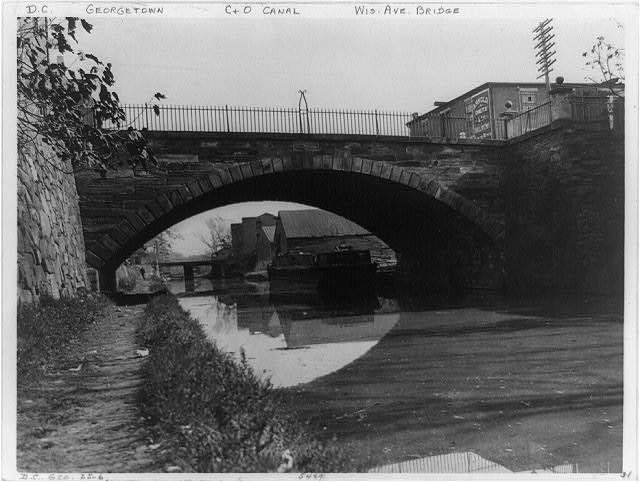
He had hardly uttered the words when Seaman re-entered the room and the two men rushed at each other. Both were infuriated and this time Seaman paid no attention to the cries of the woman. The fact that his adversary was drunk gave him a decided advantage and he beat him mercilessly about the face, while the terrified wife clung to her husband, and forgetting all the ill-treatment he had subjected her to, she endeavored to shield him with her person from the fierce rage of his assailant.
Finally becoming desperate at the cruelty of Seaman she flung herself upon him and, at the risk of being seriously hurt herself, she seized the ruffian’s arm and held it. Freed in this manner from the punishment he had been receiving, Bruebaker assumed the aggressive and rushed on his antagonist. As he approached Seaman the latter kicked at him viciously and, stroking him full in the stomach, knocked him into the corner of the room, where he fell and laid. His wife rushed to him, but he was unable to rise, and assistance had to be procured in order to get him out of the house. He was then taken to his boat, lying in the canal just back of where the fight occurred and put to bed.
-ad 607-His wife and friends, who had been frequent witnesses of similar affairs, did not suppose that he was seriously injured, but as he gradually sank into unconsciousness, they became alarmed and called in a physician. By this time, however, he was beyond the reach of medical aid and he grew rapidly worse and died in a few hours.
The police had been kept in perfect ignorance of the matter, but on the death of Bruebaker one of his friends informed the officers, and Seaman was arrested by Segt. Hess and Officer Volkman. Bruebaker’s body was removed to the station house, and on an autopsy held by Dr. Hartigan it was found that death had been caused by a rupture of the mesentery, caused by violence, and he was rather of the opinion that Seaman had knocked his victim down and then stamped on him. This, however, does not seem to be the case, if the witnesses of the affairs are correct in their statements.
Mrs. Bruebaker, who was found on board the canal boat, said the her husband could not have been kicked more than once, but that she was too frightened to bu sure of what occurred. “I told George,” said she, “that I could take all the blows John wanted to give me and I could,” with this she broke down completely and wept bitterly.
Seaman is reported to be a man of very bad character, and it was stated yesterday that this is the third man whom he has killed. An inquest will be held today at the station house.
Wow … three men. George was a seriously bad dude. Seriously, three men killed?
In the Baltimore Sun the following day, it was reported that Bruebaker had died of internal hemorrhage due to a kick from Seaman. The coroner called upon a jury of six Georgetown men at the local station house to hold an inquest into the death and ultimately committed George to jail as a result of his actions, awaiting trial.
Bruebaker was buried on March 23rd at Congressional Cemetery, east of Capitol Hill. Below is his death certificate, which I found on the cemetery’s impressive website. The poor man was only 41 years old and had been in the District for just one year.
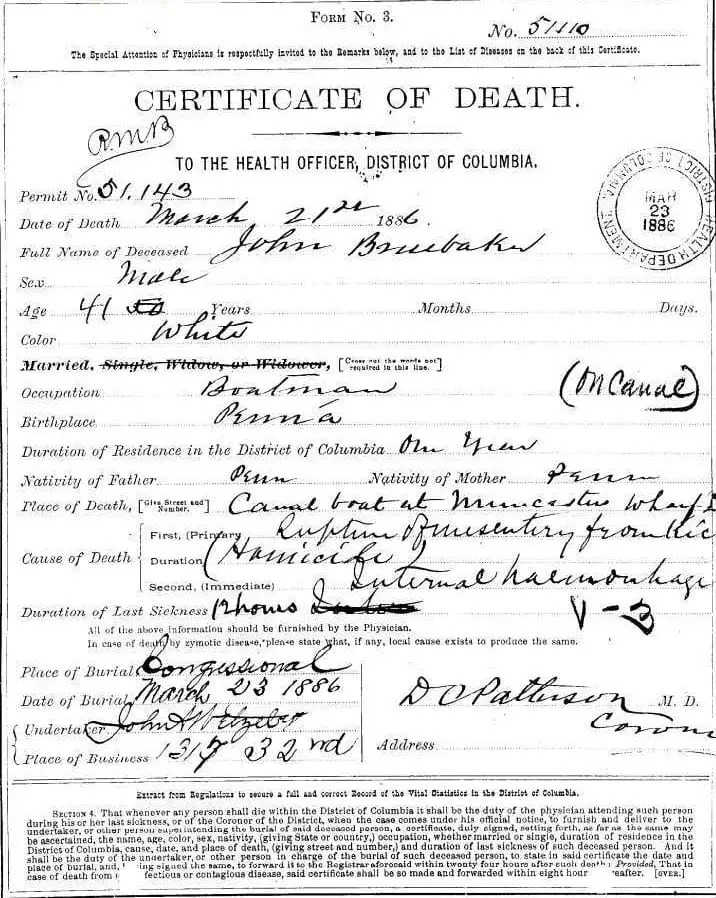

Seaman went to trial the following month — the justice system was relatively swift compared to today — and the verdict was read on April 7th, 1886. The Washington Post reported the following day that a jury of his peers found George Seaman not guilty of manslaughter and he was released. I find it hard to believe, but after having been involved in the premature deaths of three men, George was still free to walk the streets of Georgetown.
Sadly, I wasn’t able to find much more on Seaman as he faded into history.
If you enjoyed this post catch up with us on Facebook or Twitter to follow our stories.

